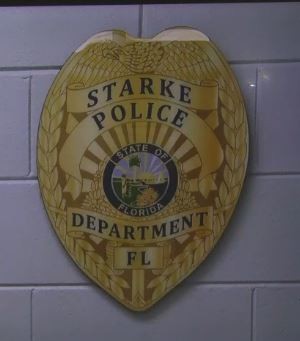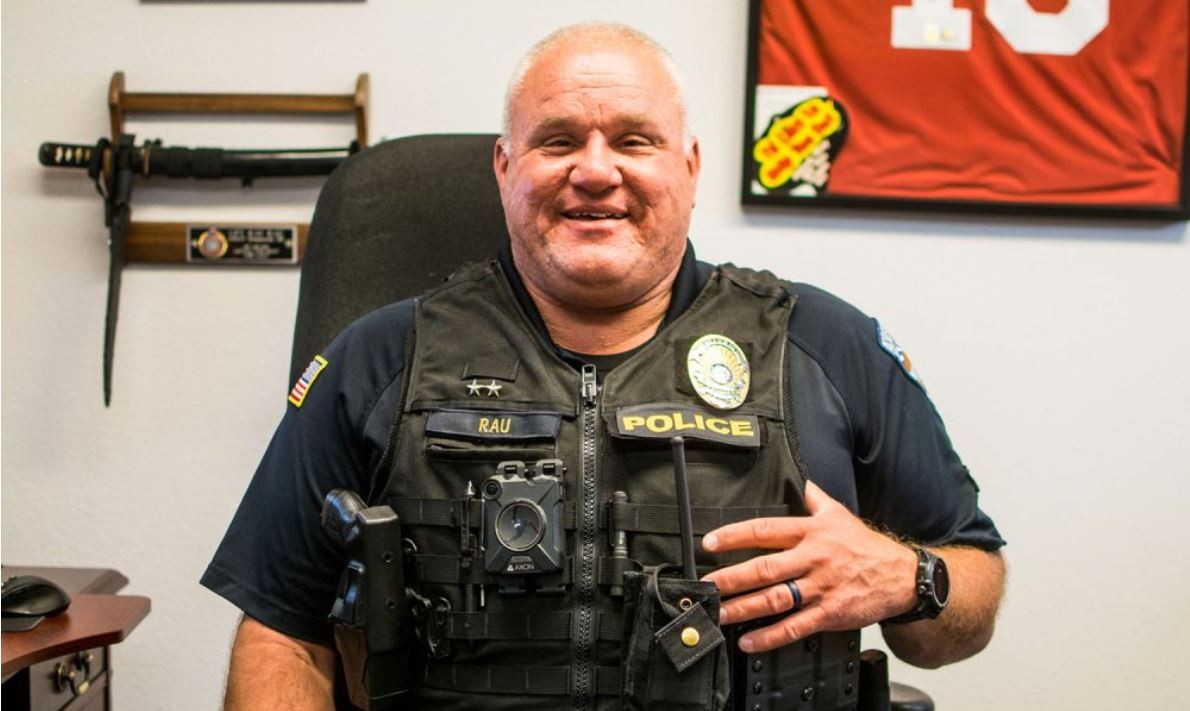Troop K lost evidence cases go back nearly 30 years
lohud The Journal News, lohud.com
BYLINE: Jorge Fitz-Gibbon and Lee Higgins
Hawthorne, NY
State police major said most evidence purged per normal procedures.

State Police Troop K barracks in Hawthorne. (Photo: File photo/The Journal News)
Major Michael Kopy said that even after four veteran investigators were dispatched to Albany to scour state evidence records, 65 items remained unaccounted for — items that included numerous recordings, a dagger, a bicycle and the two cars.
State Police Lt. Dominick Chiumento, who wrote the memo, said the review began in April 2012, after the completion of earlier audits into missing evidence that were the subject of media reports in recent weeks.
Terrence Dwyer, an attorney who has represented two state troopers who claim they were scapegoats in the evidence scandal, said the memo shows "systemic problems in Troop K," and that it is "troubling when you have an agency that has to reconstruct case folders and hunt down evidence."
"Nobody's minding the store and that has been our argument throughout," said Dwyer, who represents former Rockland County-based Trooper Seamus Lyons and has represented ex-Senior Investigator Noel Nelson.
"Lyons and Nelson became the whipping boys for God knows what reason," he said.
New York State Police officials maintained Friday that Chiumento's internal investigation was primarily an attempt to clean up paperwork on old cases, not search for actual items of evidence.
State Police Major Matthew Renneman said folders on closed cases are purged after no more than seven years, so Chiumento "had no expectation of finding the case files or the destruction records from the outset because the purge dates for both had long passed. Unfortunately, the way he elected to word some of his memo and the chart certainly makes it appear like it was a frantic search for evidence, which it was not."
For instance, Renneman said that the two Chevy vehicles cited by Chiumento "were vehicles that were seized in connection with narcotics investigations."
"We're very comfortable that they were forfeited as a result of those investigations and, as we often did back then, they were put into service as our vehicles — undercover type vehicles, surveillance vehicles — and run until they don't run any more or they reach the end of their useful life and then they're salvaged or sold at auction," Renneman said.
Evidence handling procedures are outlined in the New York State Police Field Manual. It indicates that designated "evidence custodians" are responsible for securing all evidence in troop evidence vaults. They must also maintain records, oversee the transport of evidence and notify supervisors of any issues during evidence pickups.
Higher-ups also have responsibilities. It is up to station commanders and Bureau of Criminal Investigation supervisors to ensure that the evidence records are accurate and complete, and that evidence is correctly marked and stored.
Record-keeping problems at the Hawthorne barracks were first revealed in April by the Albany Times Union, which cited internal audits focusing on Robert Bennett, a senior investigator in charge of the evidence vault who has since retired. In subsequent stories The Journal News reported that at least 18 cases were affected, including a felony drug case that was pleaded down to a misdemeanor because nearly 100 oxycodone pills in the case went missing.
In 10 of the affected cases evidence ranging from a urine sample to heroin to a laptop computer was lost or destroyed without authorization. In 2012, state troopers asked Westchester County prosecutors to dismiss warrants on the remaining eight cases because the evidence had been lost or accidentally destroyed.
While those cases date to 1993, Chiumento's 2013 memo indicates that evidence tied to more than two dozen narcotics cases between 1986 to 2002 is also unaccounted for. Chiumento said evidence records for the older cases were likely "left behind" when the department's Narcotics Enforcement Unit was disbanded and integrated into the Community Narcotics Enforcement Team in 2002.
"I found that in 2005 some work was completed by members of the Troop K Major Crimes Unit regarding dispositions on some cases, and the cancellation of some warrants, but for the most part the majority remained untouched; including the warrants," he said.
On Jan. 31, 2013, Chiumento said a team of four veteran investigators went to Albany to review evidence destruction records there, and was "able to locate destruction records for all the drugs and guns in these cases," except one. In that case, which involved 17.6 grams of marijuana, Chiumento concluded that "it was likely" it was destroyed in 2004 along with cocaine involved in the same case.
However, he said that after checking state and local destruction records, "I was left with 65 items."
"All local destruction records were checked with negative results for any of the unaccounted for items," he said.
- - - - - - - - - - - - - - - - - - - - - - - - - - - - - - -
International Association for Property and Evidence
"Law Enforcement Serving the Needs of Law Enforcement"
www.IAPE.org
BYLINE: Jorge Fitz-Gibbon and Lee Higgins
Hawthorne, NY
State police major said most evidence purged per normal procedures.

State Police Troop K barracks in Hawthorne. (Photo: File photo/The Journal News)
Major Michael Kopy said that even after four veteran investigators were dispatched to Albany to scour state evidence records, 65 items remained unaccounted for — items that included numerous recordings, a dagger, a bicycle and the two cars.
State Police Lt. Dominick Chiumento, who wrote the memo, said the review began in April 2012, after the completion of earlier audits into missing evidence that were the subject of media reports in recent weeks.
Terrence Dwyer, an attorney who has represented two state troopers who claim they were scapegoats in the evidence scandal, said the memo shows "systemic problems in Troop K," and that it is "troubling when you have an agency that has to reconstruct case folders and hunt down evidence."
"Nobody's minding the store and that has been our argument throughout," said Dwyer, who represents former Rockland County-based Trooper Seamus Lyons and has represented ex-Senior Investigator Noel Nelson.
"Lyons and Nelson became the whipping boys for God knows what reason," he said.
New York State Police officials maintained Friday that Chiumento's internal investigation was primarily an attempt to clean up paperwork on old cases, not search for actual items of evidence.
State Police Major Matthew Renneman said folders on closed cases are purged after no more than seven years, so Chiumento "had no expectation of finding the case files or the destruction records from the outset because the purge dates for both had long passed. Unfortunately, the way he elected to word some of his memo and the chart certainly makes it appear like it was a frantic search for evidence, which it was not."
For instance, Renneman said that the two Chevy vehicles cited by Chiumento "were vehicles that were seized in connection with narcotics investigations."
"We're very comfortable that they were forfeited as a result of those investigations and, as we often did back then, they were put into service as our vehicles — undercover type vehicles, surveillance vehicles — and run until they don't run any more or they reach the end of their useful life and then they're salvaged or sold at auction," Renneman said.
Evidence handling procedures are outlined in the New York State Police Field Manual. It indicates that designated "evidence custodians" are responsible for securing all evidence in troop evidence vaults. They must also maintain records, oversee the transport of evidence and notify supervisors of any issues during evidence pickups.
Higher-ups also have responsibilities. It is up to station commanders and Bureau of Criminal Investigation supervisors to ensure that the evidence records are accurate and complete, and that evidence is correctly marked and stored.
Record-keeping problems at the Hawthorne barracks were first revealed in April by the Albany Times Union, which cited internal audits focusing on Robert Bennett, a senior investigator in charge of the evidence vault who has since retired. In subsequent stories The Journal News reported that at least 18 cases were affected, including a felony drug case that was pleaded down to a misdemeanor because nearly 100 oxycodone pills in the case went missing.
In 10 of the affected cases evidence ranging from a urine sample to heroin to a laptop computer was lost or destroyed without authorization. In 2012, state troopers asked Westchester County prosecutors to dismiss warrants on the remaining eight cases because the evidence had been lost or accidentally destroyed.
While those cases date to 1993, Chiumento's 2013 memo indicates that evidence tied to more than two dozen narcotics cases between 1986 to 2002 is also unaccounted for. Chiumento said evidence records for the older cases were likely "left behind" when the department's Narcotics Enforcement Unit was disbanded and integrated into the Community Narcotics Enforcement Team in 2002.
"I found that in 2005 some work was completed by members of the Troop K Major Crimes Unit regarding dispositions on some cases, and the cancellation of some warrants, but for the most part the majority remained untouched; including the warrants," he said.
On Jan. 31, 2013, Chiumento said a team of four veteran investigators went to Albany to review evidence destruction records there, and was "able to locate destruction records for all the drugs and guns in these cases," except one. In that case, which involved 17.6 grams of marijuana, Chiumento concluded that "it was likely" it was destroyed in 2004 along with cocaine involved in the same case.
However, he said that after checking state and local destruction records, "I was left with 65 items."
"All local destruction records were checked with negative results for any of the unaccounted for items," he said.
- - - - - - - - - - - - - - - - - - - - - - - - - - - - - - -
International Association for Property and Evidence
"Law Enforcement Serving the Needs of Law Enforcement"
www.IAPE.org


